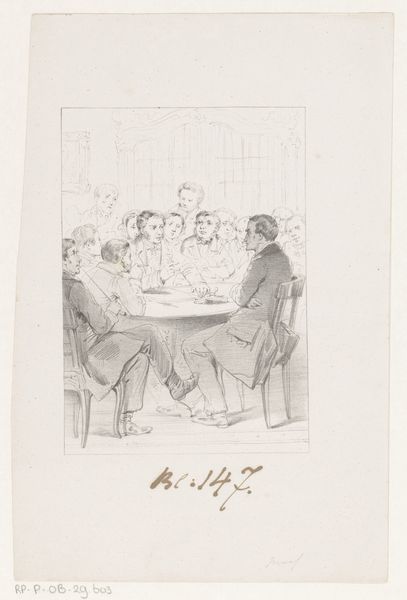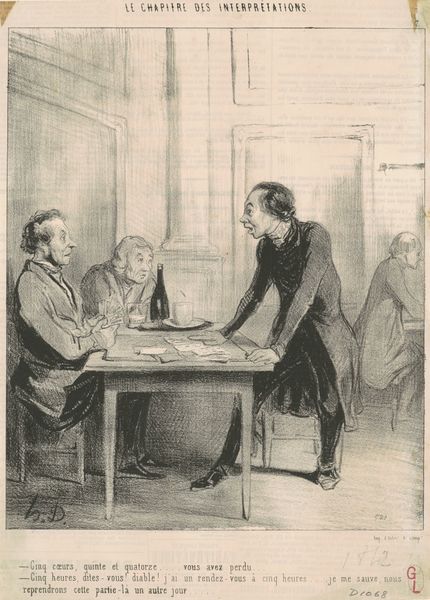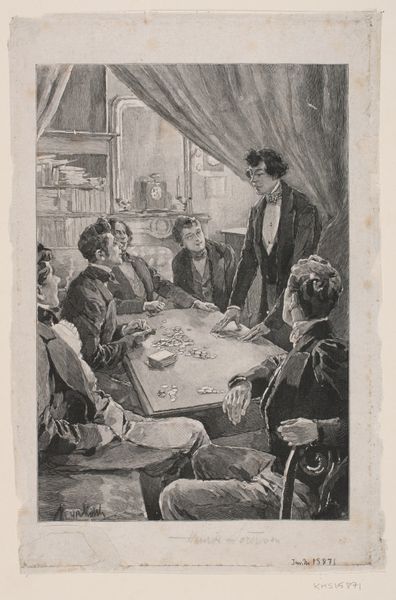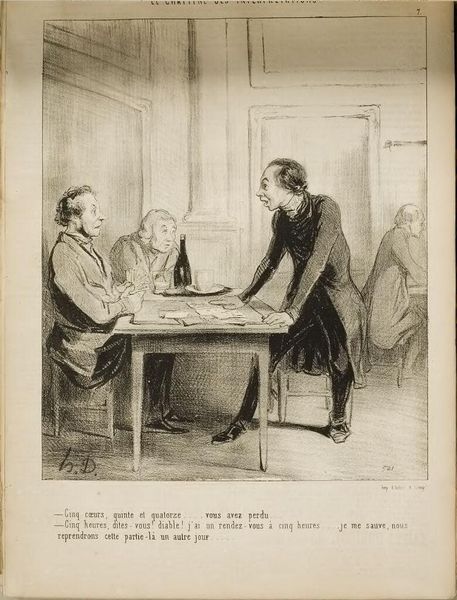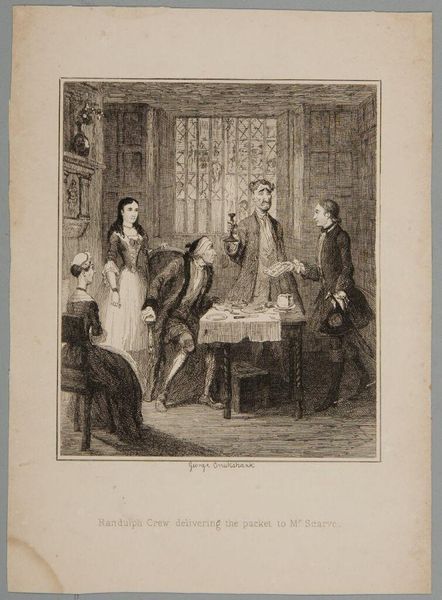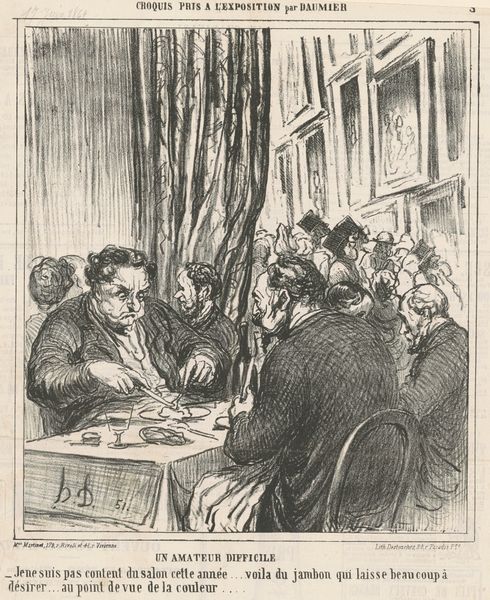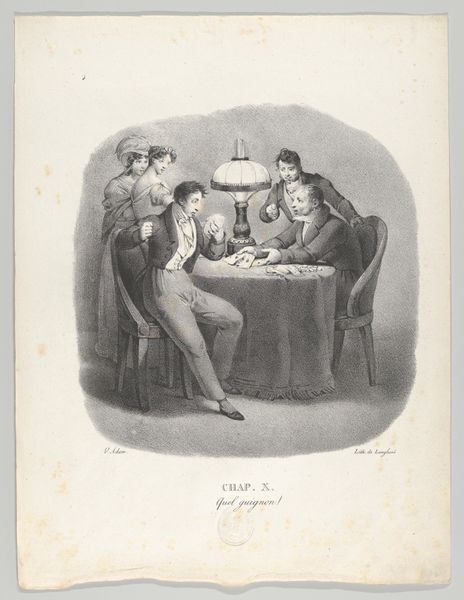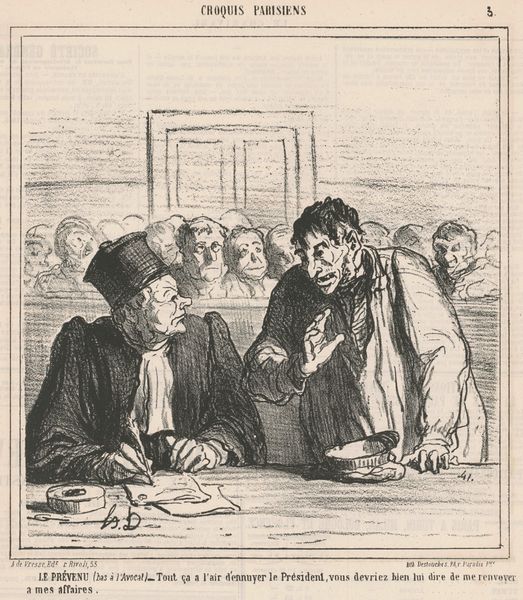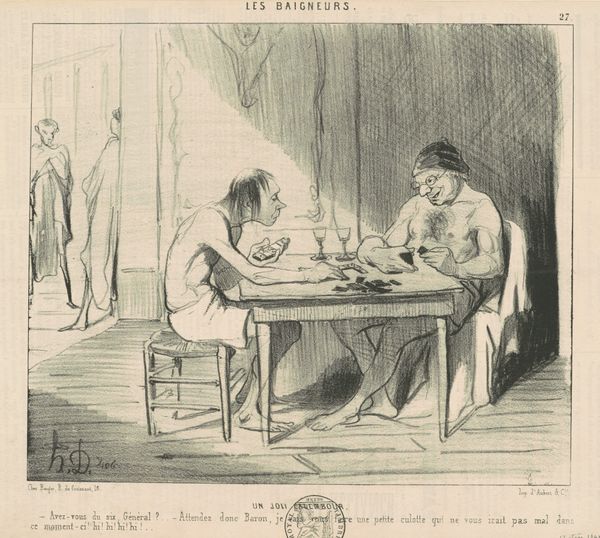
drawing, ink, pen
#
portrait
#
drawing
#
narrative-art
#
caricature
#
caricature
#
figuration
#
ink
#
group-portraits
#
pen-ink sketch
#
pen
#
genre-painting
#
academic-art
Dimensions: height 126 mm, width 95 mm
Copyright: Rijks Museum: Open Domain
Curator: This pen and ink drawing is titled "Three Men at a Table in a Restaurant," and it's attributed to Elchanon Verveer. The Rijksmuseum places it sometime between 1836 and 1900. Editor: My immediate impression is the strong element of caricature. The figures seem inflated, emphasized—the whole scene feels imbued with subtle critique. There is tension but also some type of dark humor maybe. Curator: It definitely taps into the genre of caricature, common in narrative art of the period. Notice how Verveer uses line work—thin strokes suggesting the textures of their clothes and the general buzz of the restaurant—it all adds to that critical narrative you noticed. Editor: Precisely. Think about how a simple wine bottle takes on almost phallic symbolism in that context. What commentary might Verveer be making about class or gender roles? Is there a symbolism relating to hierarchy as well. Curator: Considering Verveer’s Jewish background and the period's societal context, the composition can perhaps be interpreted as a comment on Jewish assimilation, the position of Jewish people within Dutch society, even access to restaurants. Are these characters representative of contemporary anti-Semitic caricatures? Editor: Possibly. The uniforms and finery signal status and perhaps wealth, certainly access to privilege. But what does this mean in this context? I read a kind of playful corruption in their body language. Is that what this represents? It makes me consider the hidden meanings of leisure and access during this time. Curator: I see what you're getting at, a suggestion of social tensions. Also the lack of detail regarding gender roles may play in this tension you pointed. We get the impression of men talking amongst themselves which excludes other potential interpretations about a broader group with other social interactions. It also excludes others. Editor: Absolutely, these small drawings open up a Pandora’s Box of cultural investigation—and I am always fascinated by these glimpses into other forms of expression throughout art history. Curator: This exploration highlights the rich layers of meaning embedded in what might first appear as a simple genre scene, pushing us to investigate the narratives of identity and power at play in 19th-century Dutch society.
Comments
No comments
Be the first to comment and join the conversation on the ultimate creative platform.
